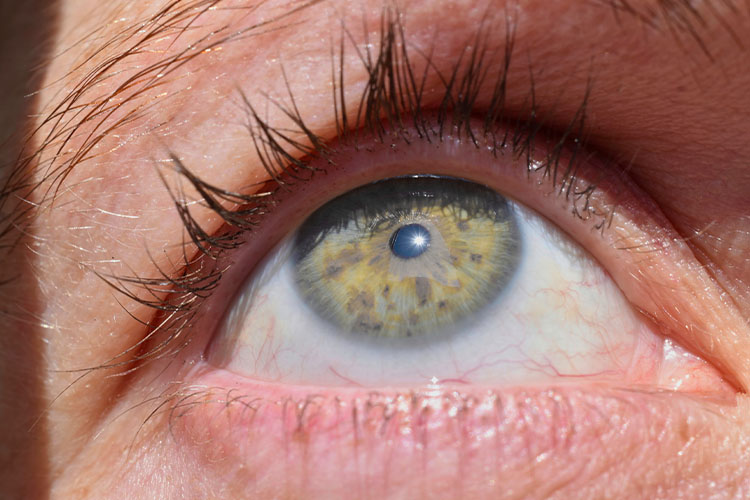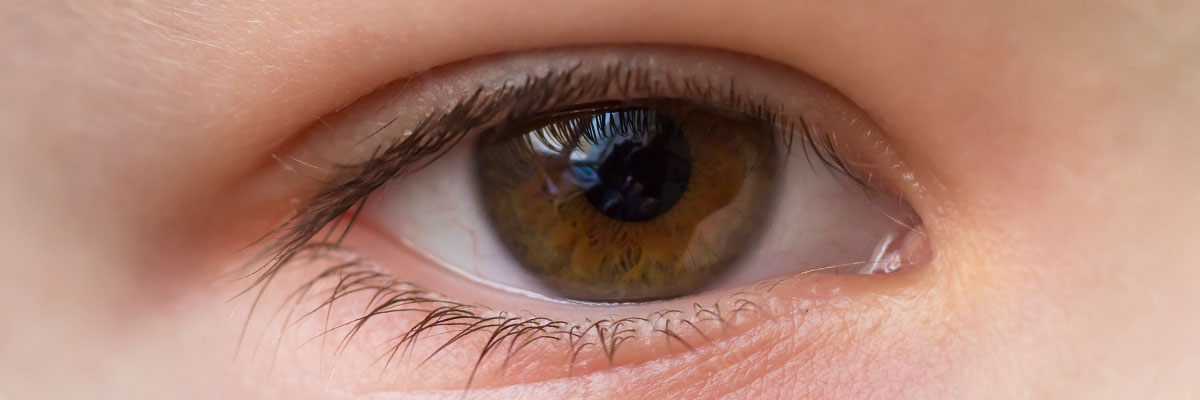Summary
Eye cancer occurs when the cells in the eye multiply or grow beyond their normal limits. This can result in the eyes developing lumps or changes in color. Additionally, the patient’s eyes may become red, painful, and vision may blur. In its early stages, the symptoms can be mistaken for other common eye conditions, making it difficult to immediately suspect cancer.
Like other forms of cancer, the exact cause of eye cancer is still not fully understood by doctors. However, it has been identified that a family history of eye cancer can increase the risk of developing it. Furthermore, frequent exposure of the eyes to intense sunlight and toxic chemicals can also raise the likelihood of eye cancer.
If a person is diagnosed with eye cancer, they may undergo various treatments such as surgery, radiotherapy, or chemotherapy. The treatment plan for the patient will depend on the cause, type, and severity of their condition.
Table of Contents
Symptoms of Eye Cancer

It can be challenging to determine whether an eye condition is cancerous, as the symptoms often resemble those of more common eye problems. However, if a person experiences any of the following symptoms, it could be a sign of eye cancer:
- Changes in eye color. One of the eyes may start to change color, which could indicate abnormal cell growth.
- Dark or white spots on the eye. The appearance of black or white patches on the surface of the eye can be a warning sign.
- Bulging of the eye. One or both eyes may begin to protrude unnaturally, which could be caused by a growing tumor.
- Eye pain and redness. Persistent discomfort, pain, and redness in the eyes that doesn’t improve with typical treatments may signal a deeper issue.
- Floaters. These are small spots or lines that seem to float in the patient’s field of vision and can be a sign of a retinal problem linked to eye cancer.
- Blurry vision. A sudden or progressive blurring of vision, especially when accompanied by other symptoms, may point to an underlying cancerous condition.
If a patient presents these symptoms, several diagnostic tests can be performed to confirm if they have eye cancer. Some of the common tests include:
- Eye examination. A thorough inspection of the eye using specialized tools to detect abnormalities.
- Ultrasound. This imaging technique uses sound waves to create a picture of the eye, helping to identify any masses or tumors.
- Fluorescein angiography. A test where a dye is injected into the bloodstream to highlight the blood vessels in the eye, allowing the doctor to detect any irregularities.
- Fine-needle biopsy. A procedure in which a small sample of tissue is taken from the eye for further examination under a microscope.
These diagnostic tools help in determining the presence and severity of eye cancer, guiding the appropriate course of treatment.
Types of Eye Cancer

There are many types of eye cancer, but the most common is intraocular eye cancer, where tumors develop inside the eye itself. To better understand this condition, here are some of the common types of intraocular eye cancer:
- Eye Melanoma. This type of eye cancer affects the cells that produce pigment or color, called melanocytes. When these cells are affected, the eyes may develop dark or white patches, leading to changes in eye color. Eye melanoma is one of the most prevalent types of adult eye cancer.
- Eye Lymphoma. In eye lymphoma, the affected areas are the lymph nodes of the eyes. This condition is more common in individuals with weakened immune systems, such as the elderly or people with AIDS. Symptoms can be subtle at first, but as the lymphoma progresses, it may cause vision problems and swelling in the eye area.
- Retinoblastoma. This is the most common form of eye cancer in children. It is characterized by noticeable changes in eye color—one eye may appear different in color from the other. Some children with this condition may also exhibit a slight squint (crossed eyes). Although it is a serious condition, 9 out of 10 children with retinoblastoma recover, especially with early diagnosis and treatment.
- Medulloepithelioma. Another type of eye cancer that primarily affects children, medulloepithelioma is typically confined to the eye and doesn’t spread to other parts, making it easier to treat. Symptoms include blurry vision, pain, and a bulging of the eyes. Because it remains localized, the prognosis for this cancer is often better with early intervention.
- Squamous Cell Cancer of the Eye. This condition affects the conjunctiva, the thin and clear membrane covering the white part of the eye. Small tumors may form in this area, and as the condition progresses, white growths can become noticeable on the surface of the eye. Patients often feel like something is constantly irritating or scratching their eyes, as if they have something in them.
Understanding these types of intraocular cancers is crucial for recognizing the symptoms early and seeking timely treatment, which greatly improves the chances of a positive outcome.
Diagnostic Procedures for Eye Cancer
Diagnosing eye cancer involves a series of specialized tests and examinations to detect abnormal growths or changes in the eye. Early diagnosis is critical to prevent the spread of cancer and to improve treatment outcomes. Here are some common diagnostic procedures used to identify eye cancer:
- Comprehensive Eye Examination. This is often the first step in diagnosing eye cancer. The ophthalmologist examines the eye using specialized tools like a slit lamp to get a detailed view of its structures, including the retina, cornea, and optic nerve. Any unusual growths, color changes, or abnormalities can be detected during this exam.
- Ultrasound of the Eye. An eye ultrasound uses high-frequency sound waves to create detailed images of the inside of the eye. This procedure helps in visualizing tumors and determining their size and location. It is particularly useful for detecting intraocular masses like melanoma or retinoblastoma.
- Fluorescein Angiography. In this test, a fluorescent dye is injected into the patient’s bloodstream, which travels to the blood vessels in the eye. A special camera then takes images of the eye’s blood vessels, allowing doctors to spot any irregularities, such as tumors affecting blood flow.
- Optical Coherence Tomography (OCT). OCT uses light waves to take cross-sectional images of the retina, enabling doctors to detect any structural abnormalities or swelling that could suggest the presence of cancer.
- Magnetic Resonance Imaging (MRI) and Computed Tomography (CT) Scans. These imaging tests provide detailed views of the eye and surrounding tissues, allowing doctors to determine if the cancer has spread beyond the eye. MRI is particularly effective in soft tissue imaging, while CT scans are useful for visualizing bones and detecting any potential bone involvement.
- Fine-Needle Biopsy. In cases where a tumor is found, a biopsy may be required to confirm whether it is cancerous. Using a fine needle, a small tissue sample is taken from the tumor and analyzed under a microscope. This procedure provides a definitive diagnosis of the type and stage of cancer.
- Genetic Testing. In some cases, genetic tests may be performed to determine if the eye cancer is hereditary, especially in conditions like retinoblastoma. Identifying genetic mutations can help in tailoring treatment and assessing the risk of cancer in other family members.
These diagnostic procedures allow doctors to accurately assess the presence, type, and stage of eye cancer, which is crucial for developing an effective treatment plan.
Complications of Untreated Eye Cancer
If left untreated, eye cancer can lead to serious complications that can affect both vision and overall health. Early detection and prompt treatment are essential to prevent these outcomes. Here are some of the potential complications of untreated eye cancer:
- Vision Loss. As tumors grow within the eye, they can damage critical structures like the retina and optic nerve, leading to partial or complete vision loss. In some cases, the eye itself may need to be removed (enucleation) to prevent the cancer from spreading, which results in permanent blindness in the affected eye.
- Spread of Cancer (Metastasis). One of the most serious risks of untreated eye cancer is metastasis, where cancer cells spread from the eye to other parts of the body. Intraocular melanoma, for example, can metastasize to the liver, lungs, and bones. Once the cancer spreads, treatment becomes more difficult, and survival rates decrease significantly.
- Orbital Invasion. Eye cancer can extend beyond the eye into surrounding tissues, including the muscles and bones of the eye socket (orbit). This can lead to pain, swelling, and further functional loss of the eye. Orbital invasion may also complicate surgical removal of the tumor and require more aggressive treatments, such as reconstructive surgery or radiation therapy.
- Secondary Cancers. Some untreated eye cancers, especially those caused by genetic mutations like retinoblastoma, increase the risk of developing secondary cancers in other areas of the body. These secondary cancers can occur in the bones, brain, or other organs, adding further complications and reducing life expectancy.
- Chronic Pain. As the tumor grows, patients may experience increasing discomfort or severe pain, particularly if the cancer invades surrounding tissues or causes inflammation. Pain may be persistent and difficult to manage, significantly affecting quality of life.
- Cosmetic Disfigurement. Tumors that cause eye bulging, color changes, or tissue damage can lead to noticeable disfigurement, affecting a person’s appearance and self-esteem. In cases where the eye must be removed, prosthetic eyes can help with appearance, but the emotional impact of disfigurement may persist.
- Emotional and Psychological Impact. Living with untreated eye cancer can result in significant emotional distress, including anxiety, depression, and a diminished quality of life. Patients may feel overwhelmed by the prospect of vision loss, physical disfigurement, or the possibility of the cancer spreading.
Addressing eye cancer promptly with appropriate treatment reduces the risk of these serious complications, improves the chances of preserving vision, and increases overall survival rates.
Causes of Eye Cancer

Currently, the exact cause of eye cancer is still not fully understood by doctors. However, several factors are believed to contribute to the development of this condition. These include genetic mutations, environmental exposures, and certain risk factors. Here are some of the recognized causes:
- Inherited Genetic Mutations. Some people may inherit faulty genes from their parents, which increase their risk of developing eye cancer. According to researchers, mutations in genes like GNAQ and GNA11 can lead to uncontrolled growth and division of cells in the eye, eventually resulting in tumors. If a parent or close family member has had eye cancer, the likelihood of developing it in subsequent generations increases. Conditions like retinoblastoma, a childhood eye cancer, are often linked to genetic factors passed down within families.
- Exposure to Ultraviolet (UV) Radiation. Prolonged exposure to sunlight’s ultraviolet rays is a well-known cause of skin cancer, but it is also believed to increase the risk of eye cancer. UV radiation can damage the DNA in cells of the eye, potentially leading to the formation of cancerous growths. This risk is particularly associated with cancers like ocular melanoma. Wearing UV-protective sunglasses can help reduce this risk.
- Exposure to Toxic Chemicals. Frequent exposure to hazardous chemicals, such as pesticides, insecticides, and industrial chemicals, can increase the risk of eye cancer. Some of these chemicals may have carcinogenic properties, meaning they can cause changes in the eye’s cells, potentially leading to cancer. Additionally, prolonged use of makeup or cosmetics containing harmful substances like lead or other toxic metals may also contribute to eye cancer risk.
- Weakened Immune System. Individuals with compromised immune systems, such as those with HIV/AIDS or people on long-term immunosuppressant medications, are more susceptible to developing certain types of eye cancer, particularly eye lymphoma. When the immune system is weakened, it is less capable of detecting and eliminating cancer cells, allowing them to grow unchecked.
- Age and Ethnicity. Certain types of eye cancer, such as ocular melanoma, are more common in older adults and individuals with lighter skin tones or light-colored eyes. The reduced melanin in light-colored eyes may offer less protection against UV radiation, which could explain this increased risk.
While these factors are linked to a higher risk of eye cancer, it is important to note that having one or more of these risk factors does not guarantee the development of cancer. Regular eye check-ups and protective measures, like using sunglasses and avoiding harmful chemicals, can help lower the risk.
Prevention of Eye Cancer

While it may not be entirely possible to prevent eye cancer, as the exact causes are still not fully understood, there are several steps that can be taken to reduce the risk. By adopting certain protective measures, you can lower your chances of developing this condition. Here are some recommended prevention strategies:
- Wear Sunglasses and Hats. Protecting your eyes from the sun’s harmful ultraviolet (UV) rays is essential in reducing the risk of eye cancer. Make it a habit to wear UV-protective sunglasses when outdoors, especially during peak sunlight hours. Additionally, wearing a wide-brimmed hat or using an umbrella can provide further protection by shielding both your eyes and skin from direct sunlight.
- Apply Sunscreen. Studies show a link between UV exposure and the development of various types of melanoma, including skin and ocular melanoma. While sunscreen doesn’t directly protect the eyes, applying it to exposed areas of the skin can reduce the risk of skin melanoma, which may potentially spread to the eyes. Use a broad-spectrum sunscreen with a high SPF to safeguard your skin against harmful UV rays.
- Regular Eye Examinations. Undergoing routine eye exams is crucial for early detection of eye cancer and other eye-related conditions. Regular check-ups with an ophthalmologist or optometrist allow for the early identification of any abnormal growths or changes in the eye, improving the chances of successful treatment if eye cancer is detected. For those with a family history of eye cancer or other risk factors, more frequent exams may be recommended.
By incorporating these protective habits into your daily routine, you can significantly reduce your risk of developing eye cancer while promoting overall eye health.
Risk Factors for Eye Cancer
Eye cancer can affect anyone, but certain factors can increase the likelihood of developing this condition. Understanding these risk factors is essential for early detection and prevention. The primary risk factors include:
- Light Eye Color. Individuals with blue or green eyes have a higher risk of developing eye melanoma compared to those with darker eye colors. The reduced melanin in lighter eyes may offer less protection against ultraviolet (UV) radiation, potentially leading to increased susceptibility to cancer
- Fair Skin. People with fair or pale skin that burns easily have an elevated risk of eye cancer. This is because fair skin contains less melanin, which provides less protection against UV radiation .
- Family History. A familial history of eye cancer can increase an individual’s risk. Specific inherited conditions, such as dysplastic nevus syndrome or BAP1 tumor predisposition syndrome, are associated with a higher likelihood of developing eye cancers
- Age. The risk of eye cancer increases with age, particularly affecting individuals over 50. Accumulated exposure to UV radiation and environmental factors over time may contribute to this increased risk .
- Exposure to Ultraviolet (UV) Radiation. Although the direct link between UV exposure and eye cancer requires further research, some studies suggest that excessive exposure to UV radiation may increase the risk of developing certain types of eye cancers .
- Genetic Factors. Certain genetic mutations, such as those in the BAP1 gene, have been linked to an increased risk of eye cancer. These mutations can predispose individuals to developing tumors in the eye
While these factors can elevate the risk of eye cancer, they do not guarantee its development. Regular eye examinations and protective measures, such as wearing UV-blocking sunglasses and minimizing sun exposure, can help reduce the risk.
Eye Cancer FAQs
Here are some frequently asked questions (FAQs) about eye cancer, providing helpful insights for patients and their families.
- What are the early signs of eye cancer?
Early signs of eye cancer can be subtle and may include blurred vision, dark or white spots on the iris, changes in eye color, or the appearance of floaters (small spots or lines in your field of vision). Some patients may also experience eye pain or bulging of the eye. If you notice any of these symptoms, it’s important to see an eye specialist for evaluation. - Who is at risk of developing eye cancer?
Eye cancer can affect anyone, but the risk is higher in people with light-colored eyes, fair skin, a family history of eye cancer, and those over the age of 50. Excessive exposure to ultraviolet (UV) light and toxic chemicals can also increase the risk. - Can eye cancer spread to other parts of the body?
Yes, if left untreated, certain types of eye cancer, such as ocular melanoma, can spread (metastasize) to other parts of the body, especially the liver, lungs, or bones. Early detection and treatment are key to preventing the spread of cancer. - How is eye cancer diagnosed?
Eye cancer is diagnosed through a series of specialized tests. These include a comprehensive eye examination, ultrasound imaging of the eye, fluorescein angiography (to examine blood vessels in the eye), and sometimes a biopsy, where a small tissue sample is taken for further analysis. MRI or CT scans may also be used to check if the cancer has spread beyond the eye. - What are the treatment options for eye cancer?
Treatment options for eye cancer depend on the type, size, and stage of the cancer. Common treatments include:- Surgery to remove the tumor or, in severe cases, the entire eye (enucleation).
- Radiotherapy, which uses radiation to target and kill cancer cells.
- Chemotherapy, especially for eye lymphoma or when the cancer has spread.
- Laser therapy to destroy smaller tumors with minimal damage to surrounding tissue.
Your doctor will recommend a treatment plan based on the specific characteristics of your condition.
- Can eye cancer cause blindness?
Yes, if eye cancer is not treated promptly, it can damage vital structures in the eye, leading to partial or complete blindness in the affected eye. In some cases, the eye may need to be removed to prevent the spread of cancer, resulting in permanent vision loss. - Is eye cancer hereditary?
Certain types of eye cancer, like retinoblastoma, are linked to inherited genetic mutations. If a family member has had eye cancer, especially in childhood, there may be a higher risk of developing the condition. Genetic counseling and testing can help assess this risk. - How can I reduce my risk of eye cancer?
To lower the risk of developing eye cancer, follow these steps:- Wear UV-blocking sunglasses and wide-brimmed hats when exposed to sunlight.
- Avoid exposure to harmful chemicals and toxins.
- Get regular eye check-ups, especially if you have a family history of eye cancer.
- Practice good skin protection to avoid melanoma, which may spread to the eyes.
- Can children get eye cancer?
Yes, children can develop eye cancer, the most common type being retinoblastoma. It usually affects children under five years old. The condition is highly treatable if detected early, with most children recovering fully. - What is the prognosis for eye cancer?
The prognosis for eye cancer depends on the type and stage of the cancer at the time of diagnosis. Early detection and treatment typically result in a better outcome, with many patients successfully treated and living healthy lives. However, if the cancer has spread to other parts of the body, the prognosis may be more serious. Regular follow-ups and monitoring are essential for managing long-term outcomes.
These FAQs provide an overview of the common concerns regarding eye cancer. If you suspect any symptoms or are at high risk, it’s crucial to consult an eye specialist for early diagnosis and management.


